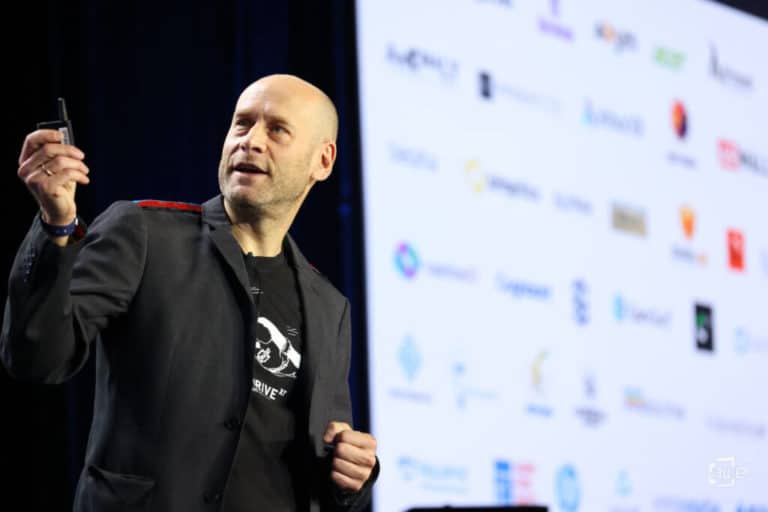
Amidst an upwelling of metaverse cultural excitement and rapid maturation of augmented reality (AR) and virtual reality (VR), Augmented World Expo (AWE) represents the pulse of the XR industry and a glimpse into its future.
Leaders from each of next week’s twelve AWE conference tracks joined Awesome Future to give us a behind-the-scenes preview of this global metaverse event where “XR business thrives.”
We spoke with metaverse founders, CEOs, developers, designers, product leads, storytellers, and event XR doctors, to learn about the topics they’ll be sharing and the big questions they’ll be tackling.
While there is great agreement that the metaverse is filled with infinite potential, a handful of key themes came up in nearly each of the conversations we had.
Here’s what we learned and what it means for business.
What are the metaverse trends from Augmented World Expo 2022 thought leaders?
- We all have a different definition of the metaverse, but some clear directions are emerging. Spatial computing is being debated and discussed in pop culture beyond “what is it?” and this is a really good sign.
- XR Platforms and products are quickly becoming enterprise-ready. Previous blockers to scale are being smashed by AI automation and end-to-end solutions; while work to define standards and protections is clarifying the playing field.
- A successful metaverse will be measured by its interoperability, accessibility, utility, and humanity.
- Privacy and control over XR metadata are just as important as opportunities to access the metaverse. Advanced XR sensors and machine learning can reveal previously unthinkable data about metaverse participants; current regulations don’t even begin to address the problem.
- The XR industry flocks to AWE for the community, collaboration, and cross-pollination. Connections and learnings from AWE create partnerships, inspire innovation, and fuel explorations of the metaverse year-round.
We all have different views of the metaverse
I hate to say it, but the metaverse has a multiverse problem. When I asked our experts to describe their work, each one needed to define their understanding of the metaverse before they could explain what they do. No two were the same. If the experts can’t agree, there’s still not just one answer.
For some, the metaverse needs to be immersive and seamless—a fully embodied digital world. While others are content to start with small XR-powered moments on a gradual journey deeper into the possibilities of spatial computing. Some, like Kara Swisher — who has a great definition but is still skeptical, think that “it’s a great idea, but it’s not here yet.”
While there may not be agreement about what it is, exactly, the market overall seems quite excited about targeted applications of AR.
Augmented reality experiences that bring “just the right amount” of 3D visualization into the viewer’s world, like the Tilt Five tabletop games or the virtual presence of WebEx Holograms, lead the way with undeniable value. Targeted applications also limit the overall complexity of adopting a metaverse tool.
XR Platforms and products are quickly becoming enterprise-ready
Enterprise adoption of new technology requires a certain level of security, features, longevity, and interoperable infrastructure. While early XR tools focused on proving new spatial models, they often missed key enterprise features (SSO, security, legacy integrations). Platforms are rapidly maturing to meet the full end-to-end business needs that will unlock scale and ROI across the metaverse.
A prime example of this is Alan Smithson and MetaVRse announcing their MetaVRse Engine 2.0 on the main stage at AWE. Further accelerating adoption are AI-powered 3D workflows and asset management platforms, like VNTANA and Hexa3D which deliver end-to-end commerce solutions that dramatically reduce the effort to create, publish, and measure XR content.
If you haven’t started already, it’s a great time to consider your 3D content management and publication strategy and tools.
A successful metaverse will be measured by its interoperability, accessibility, utility, and humanity
The people building the metaverse are urgently, hungrily clamoring for (and building) clear standards and policies to protect and govern our experiences and data in XR. There is so much good work being done in this space—like Brittan Heller at The Atlantic Council and Christopher Lafayette’s GatherVerse—and so many more.
Interoperability and ownership of metaverse avatars and identities were by far the most spirited topics discussed all month. If a fully “embodied internet” experience is the future of the metaverse, the ability to easily move between spaces, tasks, and content as our preferred representation will be key.
Further, if the metaverse is truly to benefit all of humanity, much work is still required to prioritize experience, interaction, and hardware design that accounts for all bodies and abilities.
Privacy and control over XR metadata are just as important as opportunities to access the metaverse
The same technologies that make for rich, personalized, immersive experiences can also expose our personal data and content to everyone. Next-gen sensors (eye-tracking, BCI, skin conductivity) are already delivering us deep into multi-sensory immersion; but on the back-end, it’s still the wild west.
Self-selected communities like XRSI and Metaverse Reality Check are sounding clarion calls that current data policies, protections, and corporate responsibility fall short and that we must act now to create policy that drives this technology, and not the other way around.
The XR industry flocks to AWE for community, collaboration, and cross-pollination.
The best part is the people. While the Augmented World Expo floor is where the world can see the newest, most cutting-edge XR technology, the world’s leading XR minds and makers come to AWE to learn from and become inspired by this passionate, welcoming community of experts.
Industry veterans and first-time presenters alike will share a palpable excitement to connect with and learn from their peers. This free exchange of ideas, support, and opportunity drives goodwill and helps XR business thrive year-round.
 Nathan C is a partner at Awesome Future. You can watch all of their AWE 2022 preview segments on YouTube and AWE.live.
Nathan C is a partner at Awesome Future. You can watch all of their AWE 2022 preview segments on YouTube and AWE.live.






